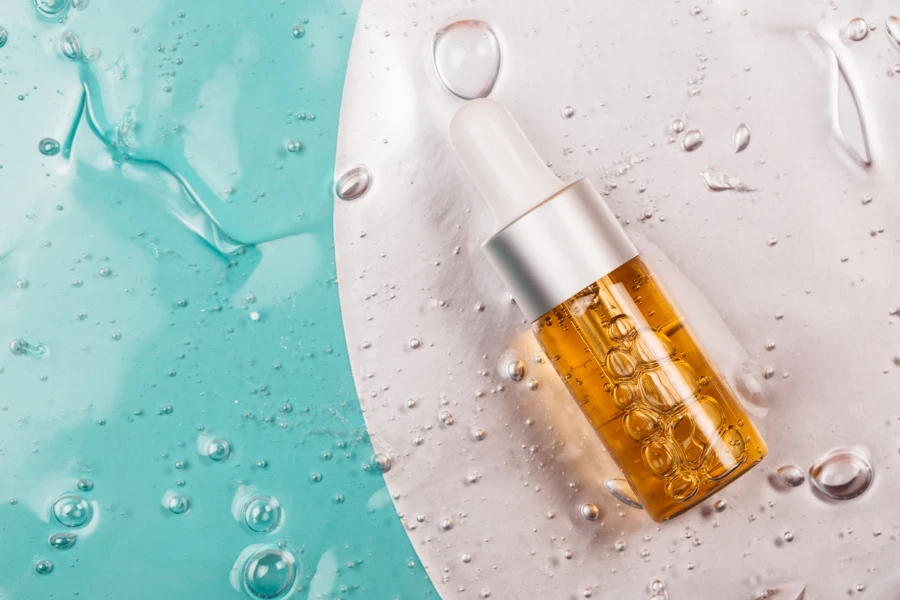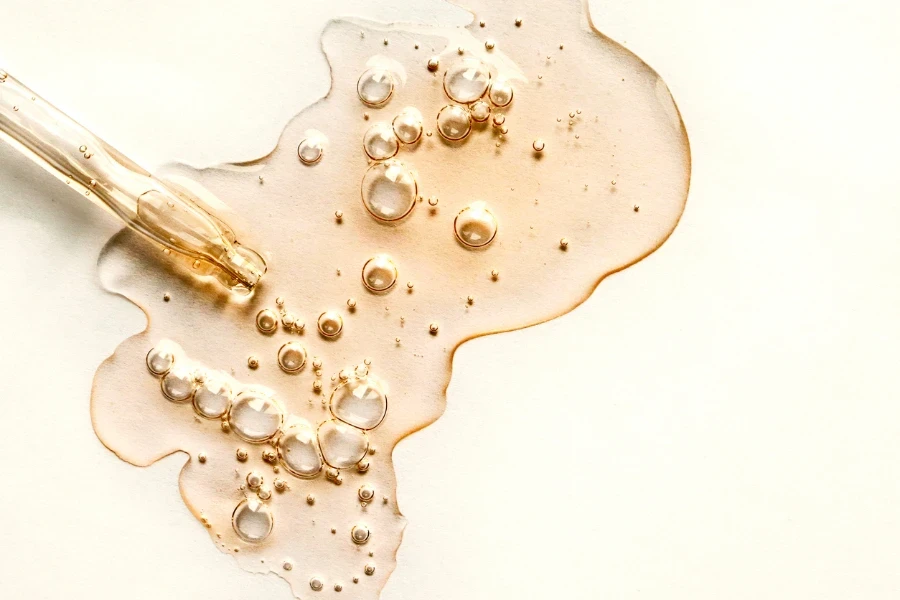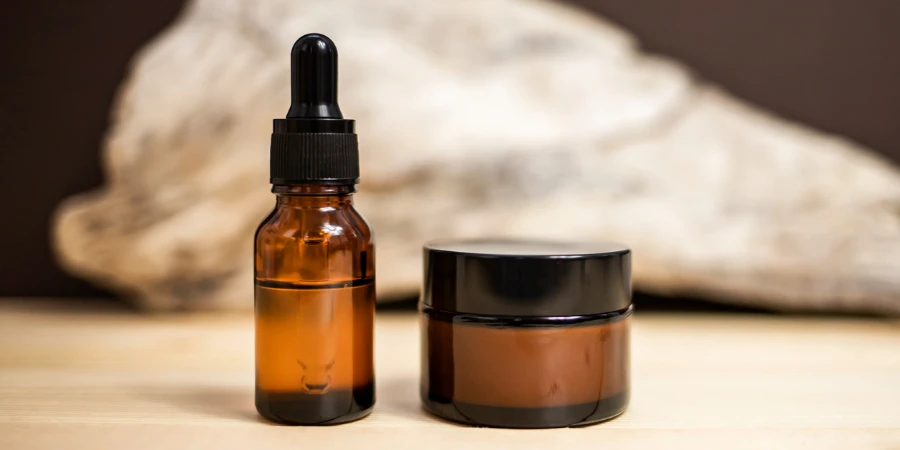In the ever-evolving world of skincare, the debate between retinal and retinol continues to captivate beauty enthusiasts and industry professionals alike. As we navigate through 2025, understanding the nuances between these two powerhouse ingredients is crucial for business buyers aiming to meet the growing demands of their customers. This guide delves into the key differences, market potential, and social media trends surrounding retinal and retinol, providing valuable insights for retailers and wholesalers in the beauty and personal care industry.
Table of Contents:
– Understanding Retinal and Retinol: Key Differences and Market Potential
– Popular Product Types: Analyzing Ingredients, Effectiveness, and Consumer Feedback
– Addressing Consumer Pain Points: Solutions and Innovations
– Key Factors to Consider When Sourcing Retinal and Retinol Products
– Final Thoughts on Choosing Between Retinal and Retinol Products
Understanding Retinal and Retinol: Key Differences and Market Potential

Defining Retinal and Retinol: What Sets Them Apart?
Retinal and retinol, both derivatives of vitamin A, are celebrated for their anti-aging and skin-renewing properties. However, their chemical structures and mechanisms of action differ significantly. Retinol, the more commonly known of the two, undergoes a two-step conversion process in the skin to become retinoic acid, the active form that promotes cell turnover and collagen production. On the other hand, retinal (retinaldehyde) requires only one conversion step, making it more potent and faster-acting than retinol. This increased efficacy often translates to quicker visible results, albeit with a higher potential for irritation.
Market Demand and Growth Trends for Retinal and Retinol
The market for retinol skincare products has shown robust growth, with a forecasted increase of USD 144.64 million from 2022 to 2027, accelerating at a CAGR of 4% during this period. This growth is driven by the increasing premiumization of skincare products, new product launches, and innovations in formulations. Retinal, though less prevalent, is gaining traction due to its superior efficacy and faster results. According to a professional report, the global anti-wrinkle products market, which includes retinoids like retinal and retinol, is expected to grow from USD 13.91 billion in 2024 to USD 20.50 billion by 2030, at a CAGR of 6.65%. This surge is attributed to the rising awareness of skincare, technological advancements, and the growing elderly population.
Social Media Buzz: Trending Hashtags and Influencer Insights
Social media platforms play a pivotal role in shaping consumer preferences and driving demand for skincare products. Trending hashtags such as #RetinalRevolution and #RetinolResults have garnered significant attention, with influencers and dermatologists sharing their experiences and recommendations. The hashtag #RetinalRevolution, in particular, highlights the growing interest in retinal as a potent alternative to retinol, emphasizing its faster results and reduced irritation. Influencers often compare the two, showcasing before-and-after photos and detailed reviews, which resonate with a broad audience seeking effective anti-aging solutions.
In conclusion, the distinction between retinal and retinol is not just a matter of scientific curiosity but a critical factor in product selection for business buyers. Understanding their differences, market potential, and social media trends can help retailers and wholesalers make informed decisions, ultimately catering to the evolving needs of their customers in the dynamic beauty and personal care industry.
Popular Product Types: Analyzing Ingredients, Effectiveness, and Consumer Feedback

Retinal-Based Products: Pros, Cons, and Consumer Reviews
Retinal-based products have gained significant traction in the beauty and personal care industry due to their potent anti-aging properties. Retinal, a derivative of vitamin A, is known for its ability to accelerate cell turnover and stimulate collagen production, making it a popular choice for addressing fine lines, wrinkles, and uneven skin tone. According to a professional report, the demand for retinal-based products has surged, driven by their effectiveness in delivering visible results within a short period.
However, retinal-based products are not without their drawbacks. One of the primary concerns is their potential to cause skin irritation, especially for individuals with sensitive skin. This can manifest as redness, peeling, and dryness, which may deter some consumers from using these products consistently. Additionally, retinal is highly sensitive to light and air, necessitating careful packaging to maintain its stability and efficacy.
Consumer feedback on retinal-based products is generally positive, with many users reporting noticeable improvements in skin texture and clarity. For instance, a review of a popular retinal serum by a leading skincare brand highlighted its ability to reduce the appearance of fine lines within a few weeks of use. However, some consumers have expressed concerns about the initial irritation phase, emphasizing the importance of gradual introduction and proper usage instructions.
Retinol-Based Products: Pros, Cons, and Consumer Reviews
Retinol, another derivative of vitamin A, is widely recognized for its anti-aging benefits and is a staple ingredient in many skincare formulations. Retinol works by promoting cell turnover and enhancing collagen production, which helps to improve skin texture, reduce hyperpigmentation, and diminish the appearance of fine lines and wrinkles. According to a report by Research and Markets, the retinol skincare product market is expected to grow significantly, driven by increasing consumer awareness and product innovation.
One of the key advantages of retinol-based products is their versatility. They are available in various formulations, including creams, oils, and serums, catering to different skin types and preferences. However, similar to retinal, retinol can cause skin irritation, particularly during the initial stages of use. This can include redness, dryness, and peeling, which may require users to adjust their application frequency.
Consumer reviews of retinol-based products are largely favorable, with many users praising their long-term benefits. For example, a well-known retinol cream has received positive feedback for its ability to improve skin firmness and reduce the visibility of dark spots. Nonetheless, some consumers have reported experiencing irritation, underscoring the need for proper guidance on usage and gradual introduction to minimize adverse effects.
Hybrid Products: Combining Retinal and Retinol for Enhanced Benefits
Hybrid products that combine retinal and retinol are emerging as a promising solution for those seeking the benefits of both ingredients. These formulations aim to leverage the strengths of each compound while mitigating their individual drawbacks. By incorporating both retinal and retinol, these products can offer a more comprehensive approach to anti-aging, targeting multiple skin concerns simultaneously.
One of the primary benefits of hybrid products is their ability to deliver faster and more noticeable results. The combination of retinal’s potent cell turnover properties with retinol’s collagen-boosting effects can lead to significant improvements in skin texture, tone, and overall appearance. Additionally, hybrid formulations often include soothing and hydrating ingredients to counteract potential irritation, making them suitable for a broader range of skin types.
Consumer feedback on hybrid products has been positive, with many users reporting enhanced efficacy and reduced irritation compared to using retinal or retinol alone. For instance, a hybrid serum by a leading skincare brand has been praised for its ability to deliver visible results within a few weeks while minimizing the risk of irritation. This has made hybrid products an attractive option for consumers looking to achieve optimal anti-aging benefits with minimal side effects.
Addressing Consumer Pain Points: Solutions and Innovations

Common Issues with Retinal and Retinol Products
Despite their popularity, retinal and retinol products often come with common consumer pain points, primarily related to skin irritation and sensitivity. These issues can deter users from incorporating these potent ingredients into their skincare routines, leading to inconsistent usage and suboptimal results. Additionally, the instability of retinal and retinol when exposed to light and air poses challenges in maintaining their efficacy over time.
Another significant concern is the lack of clear guidance on proper usage. Many consumers are unaware of the need to gradually introduce these ingredients into their routines to minimize irritation. This can result in overuse and exacerbation of side effects, leading to dissatisfaction and discontinuation of the product.
Innovative Solutions in the Market: New Formulations and Technologies
To address these pain points, the beauty industry has introduced several innovative solutions. One notable advancement is the development of encapsulation technology, which protects retinal and retinol molecules from degradation and ensures their stability. This technology allows for controlled release of the active ingredients, reducing the risk of irritation and enhancing their efficacy.
Additionally, new formulations that combine retinal and retinol with soothing and hydrating ingredients have been introduced to mitigate potential side effects. For example, a professional report highlights the use of ingredients like hyaluronic acid, niacinamide, and ceramides in these formulations to provide hydration and support the skin barrier. This approach helps to balance the potent effects of retinal and retinol, making them more tolerable for sensitive skin.
Consumer Education: Helping Buyers Make Informed Decisions
Consumer education plays a crucial role in addressing the challenges associated with retinal and retinol products. Providing clear and comprehensive information on proper usage, potential side effects, and the importance of gradual introduction can help consumers make informed decisions and achieve better results. Brands can leverage various channels, including packaging inserts, online resources, and consultations with skincare professionals, to educate consumers.
Moreover, transparency about ingredient sourcing and formulation processes can build trust and confidence among consumers. Highlighting the use of high-quality, stable forms of retinal and retinol, as well as the inclusion of supportive ingredients, can reassure consumers about the safety and efficacy of the products. This approach not only enhances consumer satisfaction but also fosters long-term loyalty to the brand.
Key Factors to Consider When Sourcing Retinal and Retinol Products

Quality and Purity: Ensuring High Standards in Product Selection
When sourcing retinal and retinol products, ensuring quality and purity is paramount. Business buyers must prioritize products that meet high standards of ingredient quality and formulation integrity. This involves selecting suppliers who adhere to stringent manufacturing practices and quality control measures. According to a report by Research and Markets, the increasing focus on product premiumization underscores the importance of sourcing high-quality ingredients to meet consumer expectations.
One critical aspect to consider is the stability of retinal and retinol in the formulation. These ingredients are highly sensitive to light and air, which can compromise their efficacy. Therefore, it is essential to choose products that utilize advanced stabilization technologies, such as encapsulation, to protect the active ingredients and ensure their potency over time. Additionally, verifying the purity of the ingredients through third-party testing can provide assurance of their quality and safety.
Supplier Reliability: Building Trust and Long-Term Partnerships
Establishing reliable supplier relationships is crucial for business buyers in the beauty and personal care industry. Partnering with reputable suppliers who have a proven track record of delivering high-quality products can help build trust and ensure consistent supply. This is particularly important for retinal and retinol products, where ingredient stability and efficacy are critical.
Business buyers should conduct thorough due diligence when selecting suppliers, evaluating factors such as their manufacturing capabilities, quality control processes, and adherence to regulatory standards. Building long-term partnerships with reliable suppliers can also facilitate collaboration on product development and innovation, enabling buyers to stay ahead of market trends and meet evolving consumer demands.
Regulatory Compliance: Navigating Industry Standards and Certifications
Navigating regulatory compliance is a key consideration when sourcing retinal and retinol products. Business buyers must ensure that the products they select comply with relevant industry standards and certifications. This includes adherence to regulations governing ingredient safety, labeling, and packaging, as well as compliance with specific requirements for the use of retinal and retinol in cosmetic formulations.
According to a professional report, the demand for natural and clean beauty products is driving stricter regulations on ingredient sourcing and formulation practices. Business buyers should prioritize suppliers who demonstrate compliance with these regulations and obtain necessary certifications, such as Good Manufacturing Practice (GMP) and ISO standards. This not only ensures the safety and efficacy of the products but also enhances their marketability and consumer appeal.
Final Thoughts on Choosing Between Retinal and Retinol Products
In conclusion, choosing between retinal and retinol products requires careful consideration of their respective benefits and potential drawbacks. Business buyers must prioritize quality, supplier reliability, and regulatory compliance to ensure they source products that meet high standards and deliver optimal results. By addressing common consumer pain points and leveraging innovative solutions, buyers can enhance their product offerings and meet the evolving demands of the beauty and personal care market.




